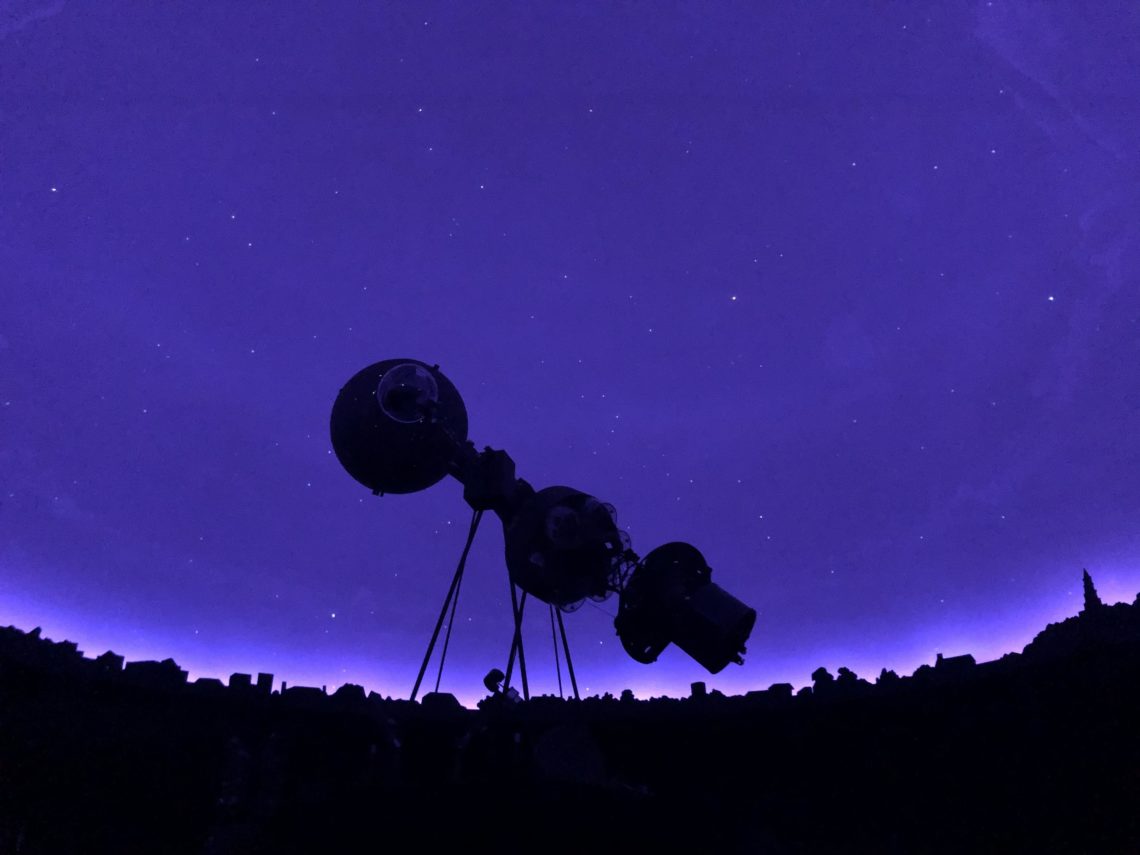Planetarium Teaches Students About Astronomy
Abigail St. Jean and Emily Townsend
“I love when kids and adults come here, I turn on the stars and show them the awe factor, it blows people’s minds,” said Doctor Melissa Hamilton, the planetarium teacher.
This is Hamilton’s second year working at the planetarium. She has worked as a teacher for 27 years and has been in Alexandria City Public Schools for 15 years. Hamilton has also taught almost every level of science including graduate.
More elementary school students come in than people outside of Alexandria City Public Schools (ACPS). Almost all fourth graders in ACPS come to the planetarium. The planetarium is also open to King Street Campus students. Any King Street Campus teacher can request a class visit to the planetarium. Students do not have to be in astronomy or earth science to go.
The Planetarium was established in 1986 when the army donated an A-3-P projector to the school.
“Although it is old, it still has its perks,” Hamilton said.
The planetarium is different than most modern planetariums because the projector is mechanical instead of digital. Hamilton wishes she had a digital projector because “it has versatility to show many different things.”
In the future, Hamilton would like to incorporate a new digital projector because it could be used for all subjects.
Although Astronomy and Earth Science classes use the Planetarium the most, Hamilton says she has seen math teachers bring their classes. Students can also do their senior experience with Hamilton. She has also expressed interest in starting a planetarium club,“I would love to have this be a popular resource for all of Alexandria.” said Hamilton.
Oceanography teacher Trisha Christopher recently brought in her classes to learn about how oceanographers use the stars to navigate.
“It helped me understand what we were trying to learn in class better,” said senior Davie Washington.
Christopher takes her students to the planetarium at least twice a year.
“There are a lot of relationships between the stars and the earth that we can’t model in the classroom,” he said. “It gives everyone a chance to see the night sky without all the light pollution.’’
Every day at the planetarium looks different for Hamilton. “I only have one day this week that isn’t booked!” she said.
In addition to running shows during the school day, Hamilton also hosts free hour-long shows for the public every month so people in the community can learn about the stars.



